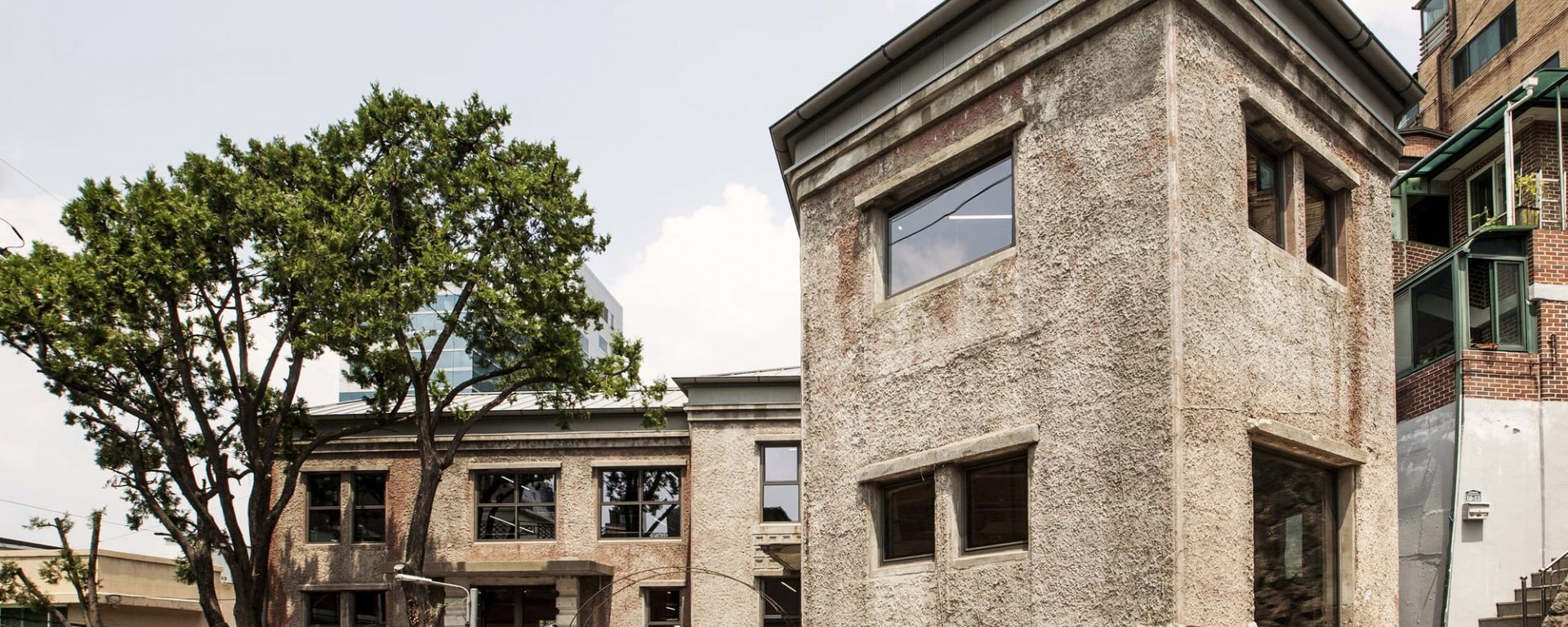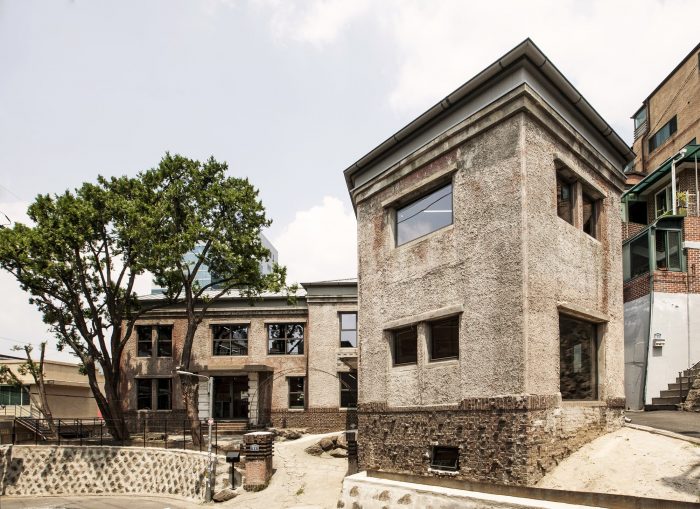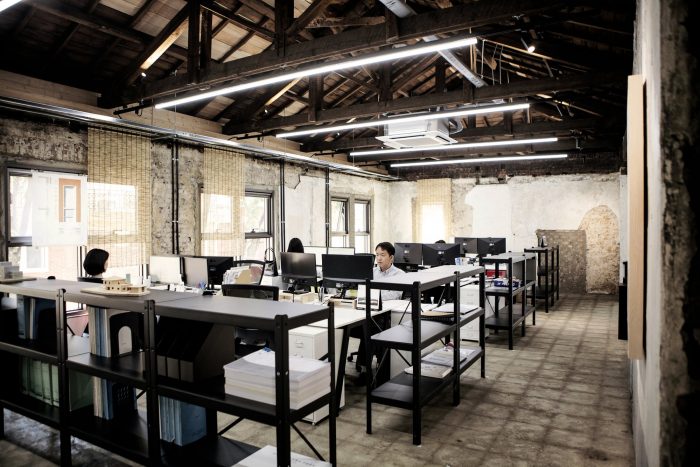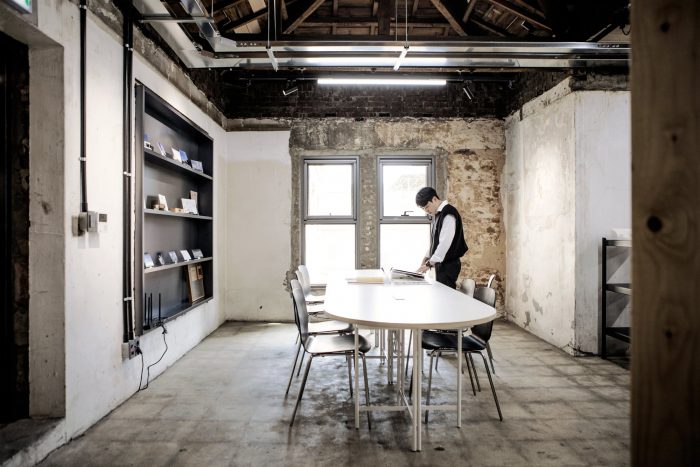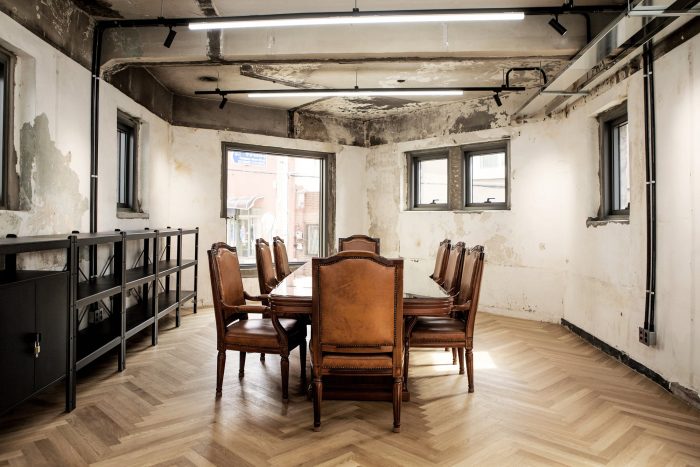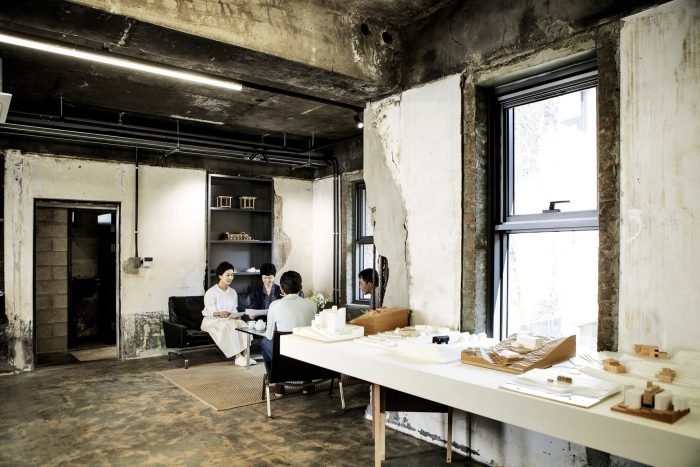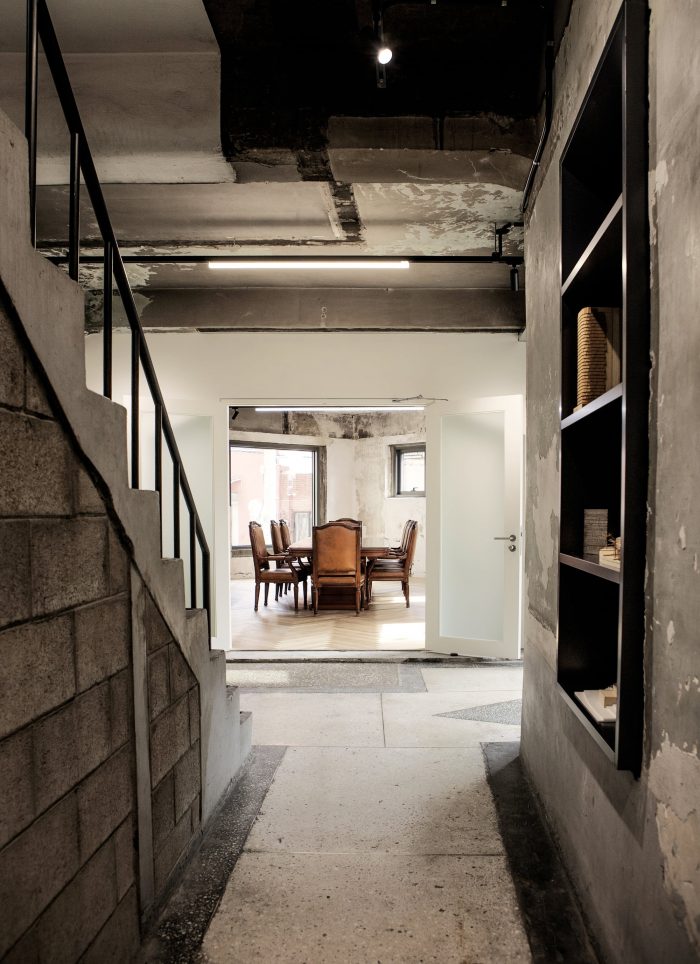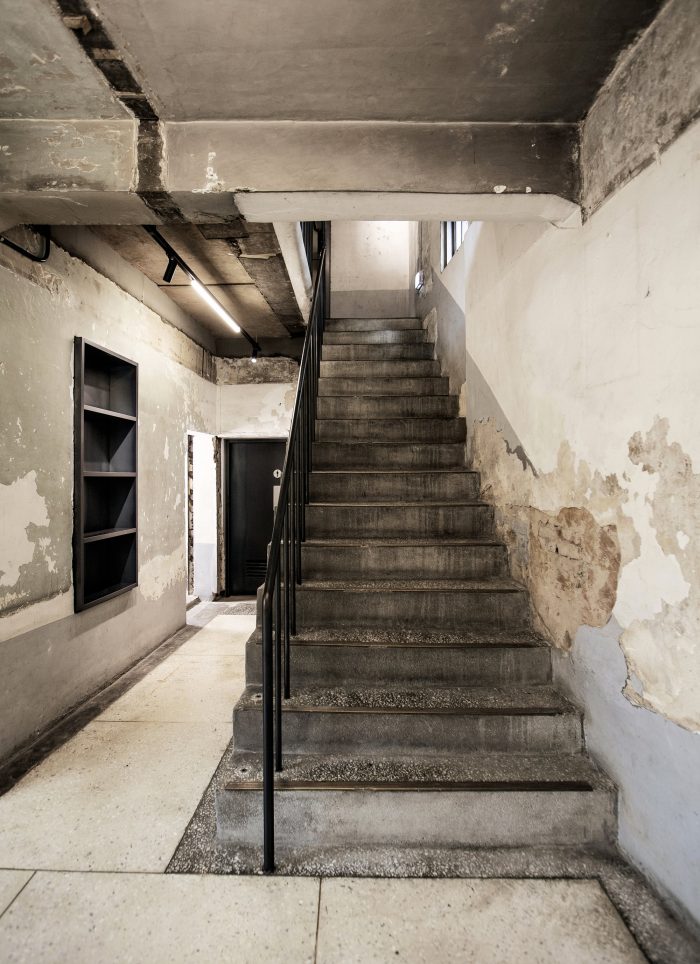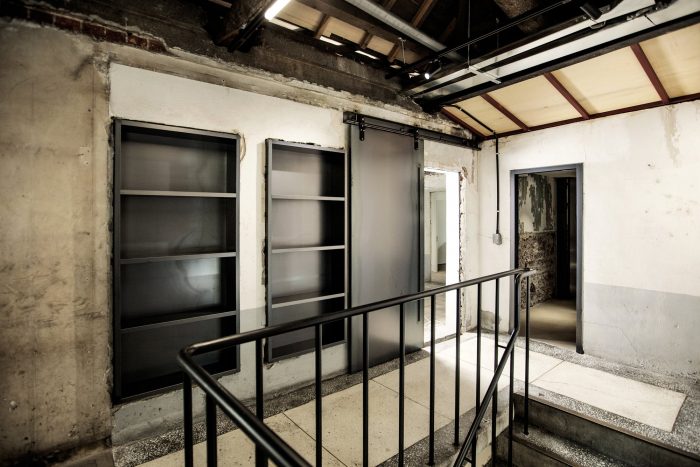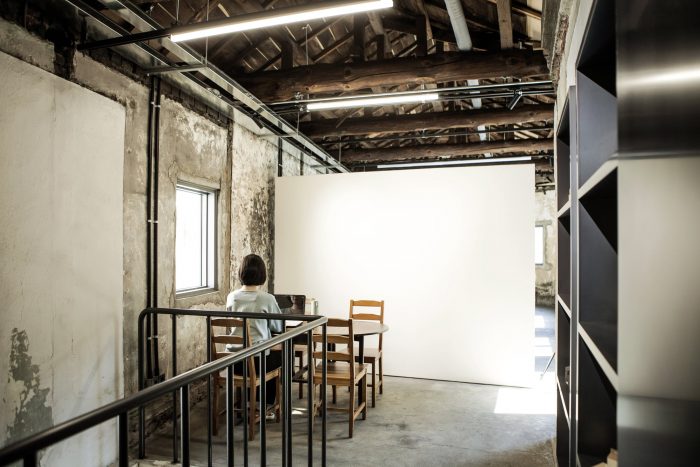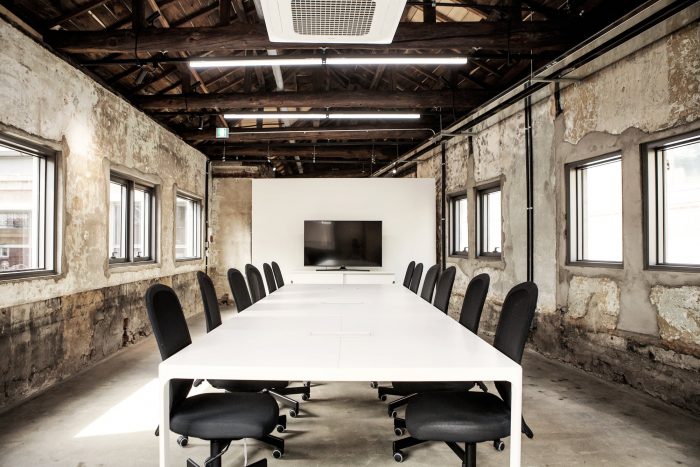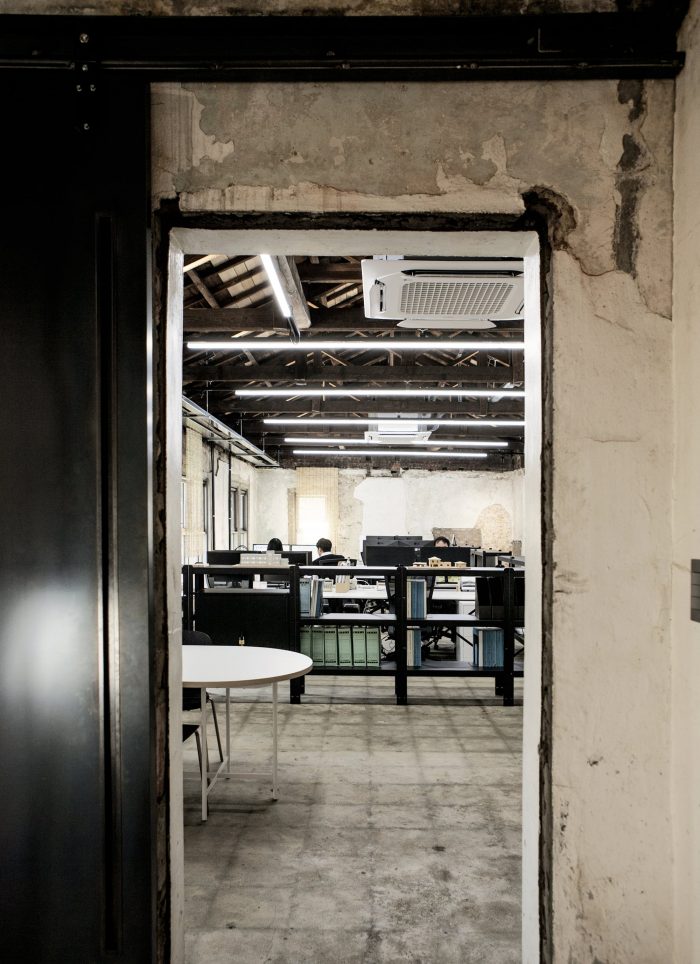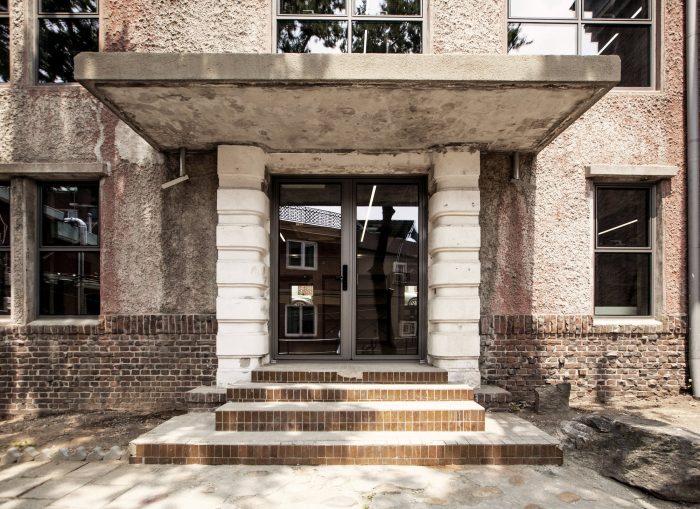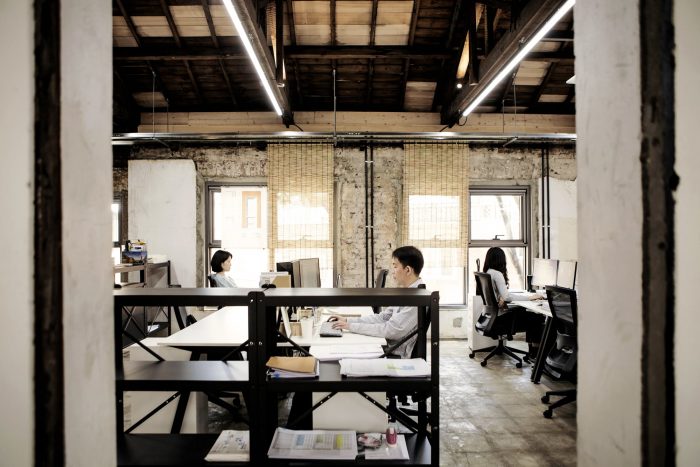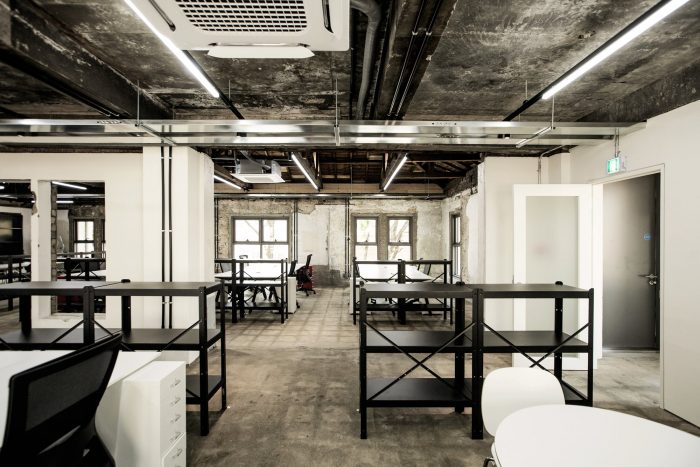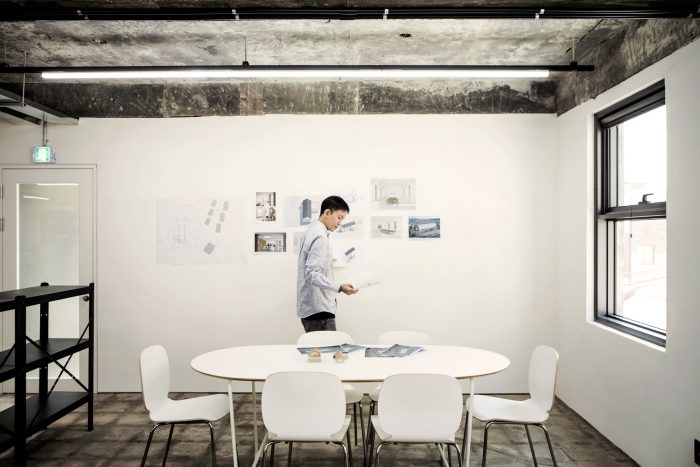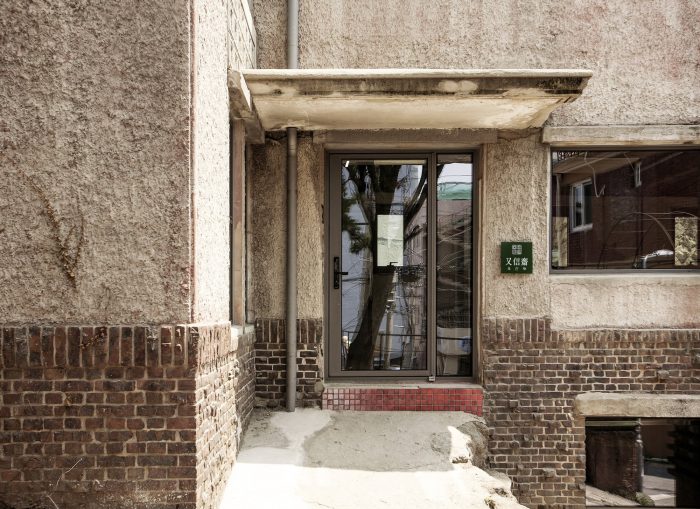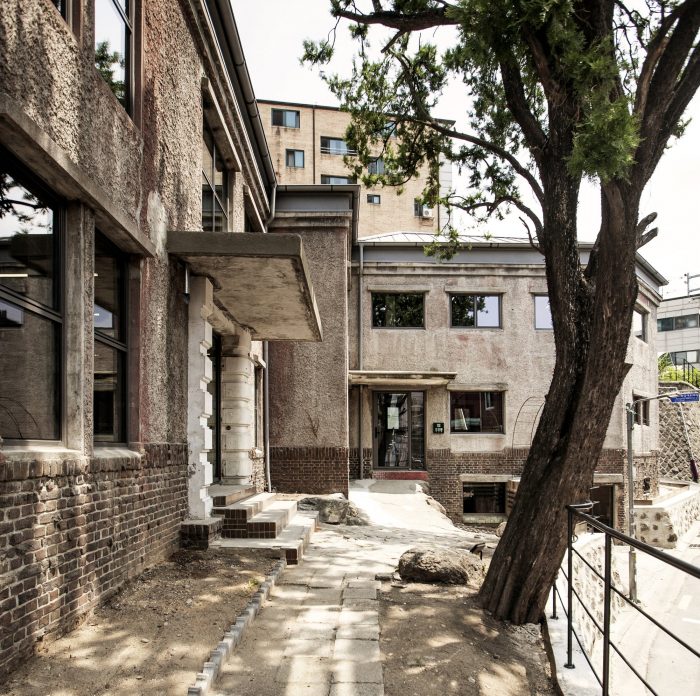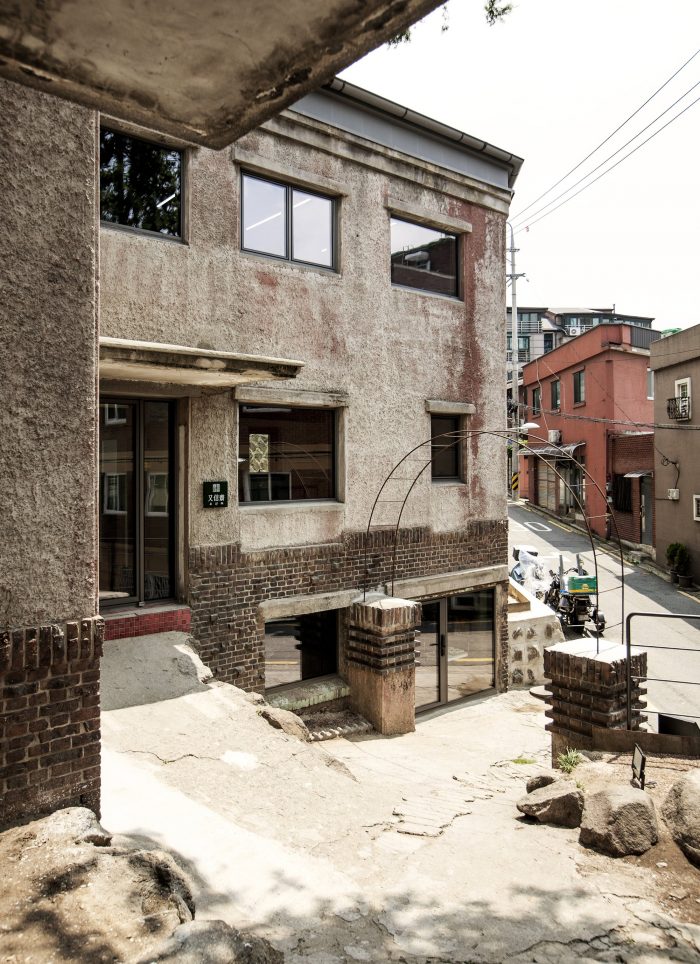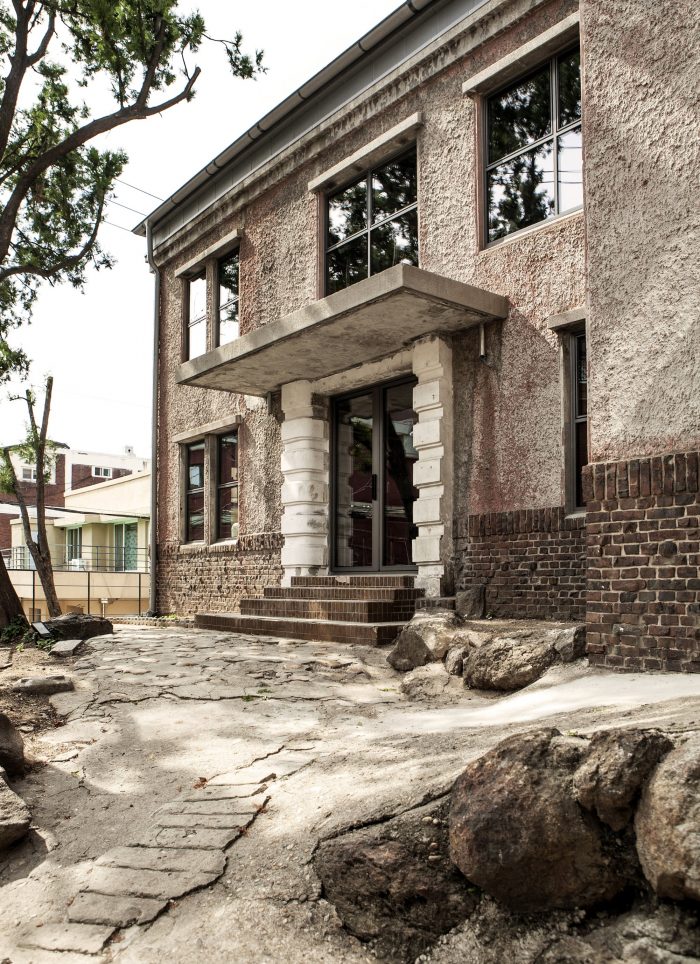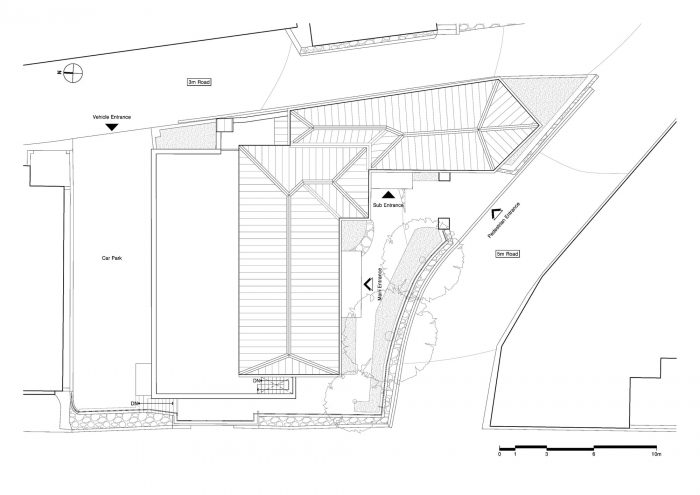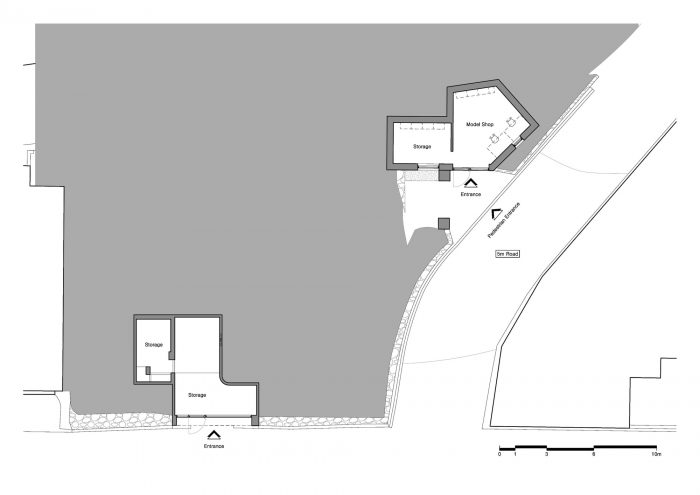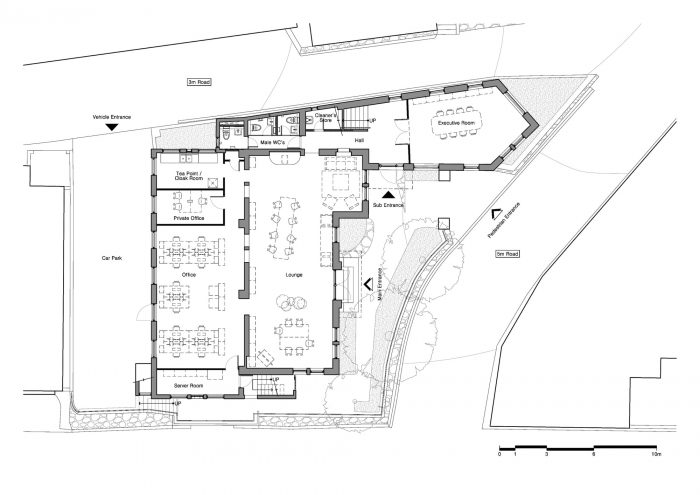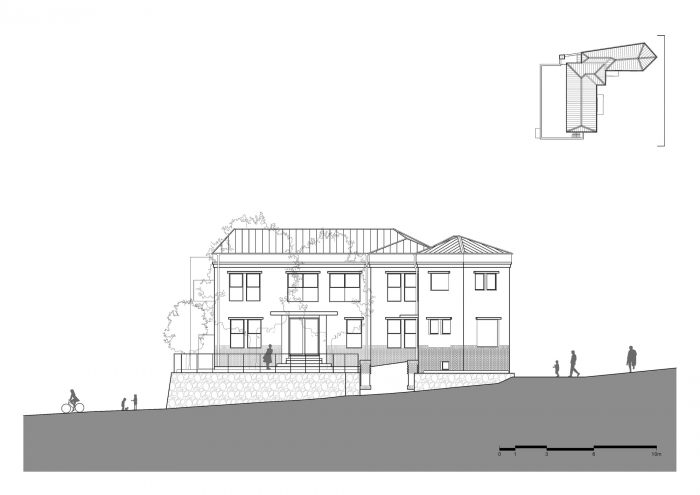Yooshinjae “是一个经过11个月的规划和改造后于2021年8月重新开放的工作空间,以振兴位于首尔龙山区的一栋破旧的建筑,作为建筑设计工作室。原有建筑于1926年6月23日完工,当时正值日本殖民时期。目前的业主在1975年获得了该物业的所有权,并将其作为自己的办公大楼。在公司搬迁后,它被作为文件储存的仓库,无人问津了近30年。
‘Yooshinjae’ is a workspace reopened in August 2021 after 11 months of planning and remodeling to revitalize a dilapidated building located in Yongsan-gu, Seoul, as an architectural design studio. The original building was completed on June 23, 1926, during the Japanese colonial period. The current owner acquired ownership of the property in 1975 and used it as their own office building. After the company moved, it was left unattended as a warehouse for document storage for nearly 30 years.
我们主要关注的是建筑遗产的恢复。任何赋予个人倾向或改变建筑的愿望从一开始就被排除在外,而是保留和保护过去的建筑语言、建筑方法和材料。这些都是决定空间特征和氛围的重要元素。
Our main focus was on the restoration of architectural heritage. Any aspirations to give personal inclinations or alter the building were excluded from the outset, and rather the architectural language, construction methods, and materials of the past were kept and conserved. These were important elements that determined the character and atmosphere of the space.
大量的时间和精力被投入到维修工程中,因为该建筑必须被现代化以适应我们目前的需要,同时保持其以前的居民留下的遗迹。被雨淋得严重损坏的瓦片屋顶被完全重建。在这个过程中,屋顶结构的腐烂部分被替换或加固,绝缘和防水性能得到加强。机械、电气、电信和消防设备都是按照现行的建筑条例新建立的。在对现有的场地条件以及雨水处理和景观规划进行全面审查后,对化粪池和石挡墙等土木工程进行了修复。当新材料被引入时,即平开窗,设计决定是参考了通过研究获得的历史记录,以提高耐用性,同时不影响原有建筑的历史性。
A great deal of time and effort was put into the repair works because the building had to be modernized to suit our current needs while maintaining the remnants left by its previous inhabitants. The severely damaged tiled roof that leaked from the rain was entirely reconstructed. In this process, rotten parts of the roof structure were replaced or reinforced, and the insulation and waterproofing performance was strengthened. Mechanical, electrical, telecommunications, and firefighting equipment were all newly established in accordance with the current building regulations. Civil engineering works such as septic tank and stone retaining walls were repaired after a full review of the existing site conditions along with rainwater treatment and landscaping plan. When new materials were brought in, i.e., casement windows, the design decision was made by referring to the historical records obtained through research to improve durability without compromising the historicity of the original building.
除了服务设施,室内被视为一个大的开放空间。结构墙之间的门、隔板和天花板,特别是过去扩建或维修工程留下的,都被拆除,这样所有的房间在视觉上都是开放的,同时揭示并突出了建筑在发现状态下的历史。家具的选择是为了方便移动,重点是根据居住者的数量和空间的目的来确定空间的可变性。这种开放式的概念在很大程度上受到了 “Yooshinjae “在COVID-19大流行期间进行改造时的影响。如果一栋建筑的可用性只受限于某种用途,那是不对的。在一个快速变化的环境中,我们需要的是一个能够适应我们不断变化的需求并能够容纳不同用途的空间。
The interior was regarded as one large open space except for service facilities. The doors, partitions, and ceilings between structural walls, especially the ones left from the extension or repair works in the past, were removed so that all rooms were visually opened while revealing and highlighting the building’s history in its found state. Furniture was selected to be moved easily, focusing on the variability of space based on the number of occupants and the purpose of space. The concept of this open plan was greatly influenced by the time when the remodeling of ‘Yooshinjae’ was underway amid the COVID-19 pandemic. It would not be right if a building’s usability was limited by a certain use only. What we would need in a rapidly changing environment is a space that could adapt to our ever-changing needs and be able to accommodate diverse uses.
Architects: Yooshin Architects & Engineers
Area : 529 m²
Year : 2021
Photographs :Boyoung Lee
Manufacturers : DAELIM BATH, EURO CERAMIC, HMIND, LG Whisen, VMZINC
Lead Architect : Wooyoung Kim
Contractor : La:ON lab
Mechanical Engineer : Seyeon Mec Co.,Ltd
Electrical Engineer : Line Engineering Co.,Ltd
Design Team : Wooyoung Kim, Sungho Yeom, Youngsoo Won
Fire Engineer : Line Engineering Co.,Ltd
City : Yongsan-gu
Country : South Korea

